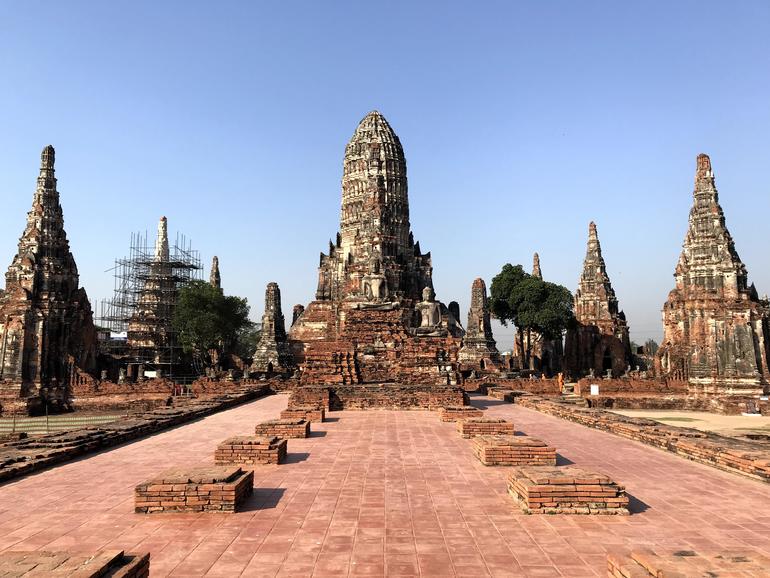
Eighty kilometers north of Bangkok, on the banks of the Chao Phraya River, sits the magnificent Wat Chaiwatthanaram. It was commissioned as a Buddhist temple by King Prasat Thong in 1630, to be built in the traditional Khmer style. It sits just outside the the ancient Siamese city of Ayutthaya, which is a World Heritage Site.
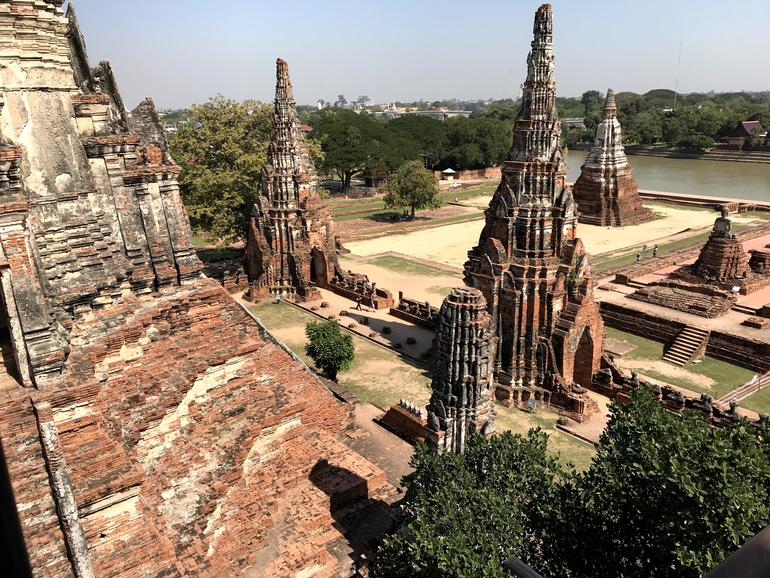
Wat Chaiwatthanaram takes the form of eight merus, tower-like structures originally used as crematoria, oriented around a central prang, or tower-like spire, and four smaller prangs. The structures are primarily stucco-covered brick, though much of the stucco has fallen away over time. Lotus-shaped decorations adorn the merus.
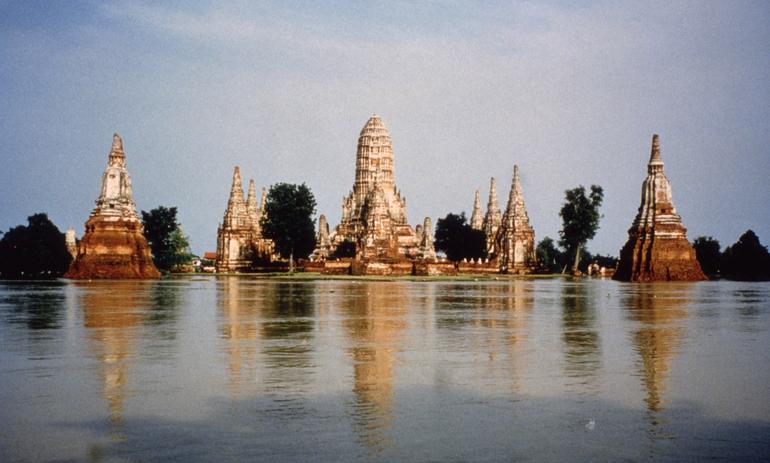
Wat Chaiwatthanaram was included on the first-ever World Monuments Watch in 1996, due to threats from flooding of the Chao Phraya River, seen here.
In 2011, a major flood triggered the beginning of WMF’s on-site work at Wat Chaiwatthanram in partnership with the Fine Arts Department of Thailand. During this first phase, funding from the Ambassadors Fund for Cultural Preservation, the US Embassy in Bangkok, and the Robert W. Wilson Challenge to Conserve our Heritage enabled testing, documentation, and condition surveys; design of conservation and stabilization plans; and implementation of priority conservation tasks.
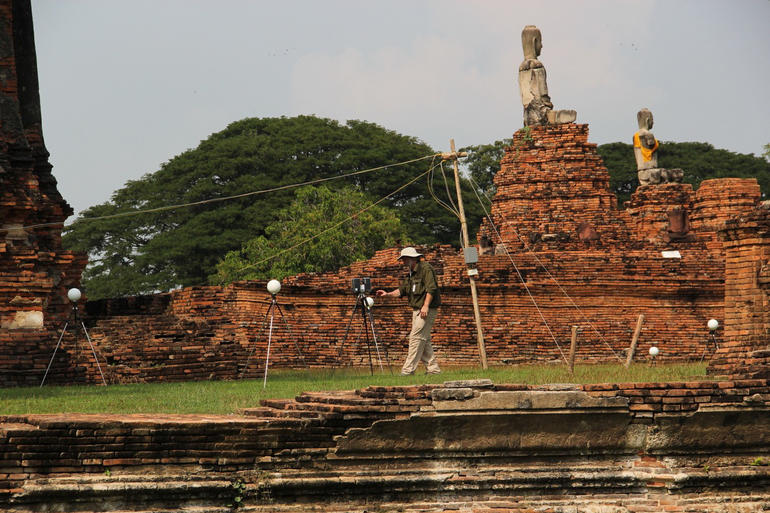
The following year, Warren Wilford and other visiting experts investigated the temple structure using a 3D-laser scanner, seen here. Geological exploration of water-retention capacity was conducted, including the installation of water pressure-measuring devices within the temple compound. A flood control plan was created and an improved flood-protection wall was erected.
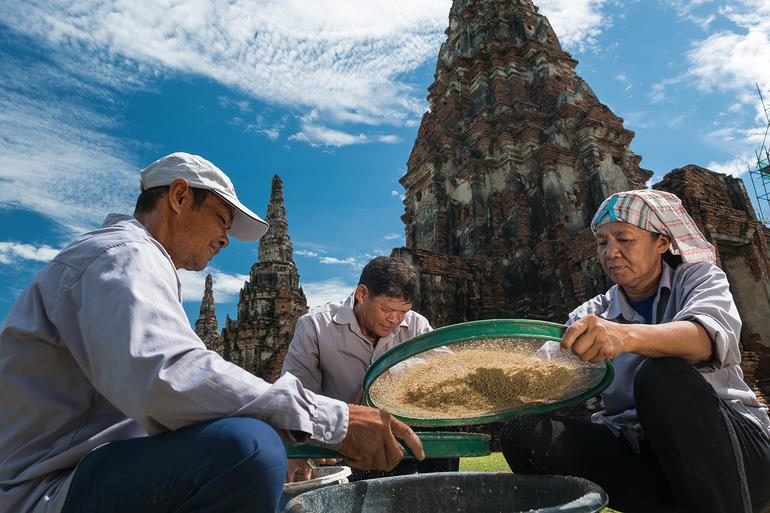
Today, WMF is midway through a three-year project to stabilize and enhance five of Wat Chaiwatthanaram’s merus and their connected galleries. Current efforts operate around two central goals: to address vulnerabilities of the temple to water infiltration caused by flooding over the decades, if not centuries, and changes to the site over time; and to build the ranks of skilled, local conservation technicians that can manage the site for years to come. Capacity building has included a series of training workshops for Fine Arts Department of Thailand staff and conservation workers, including one on conservation treatments utilizing essential oils led by a conservator from the Vatican Museums.
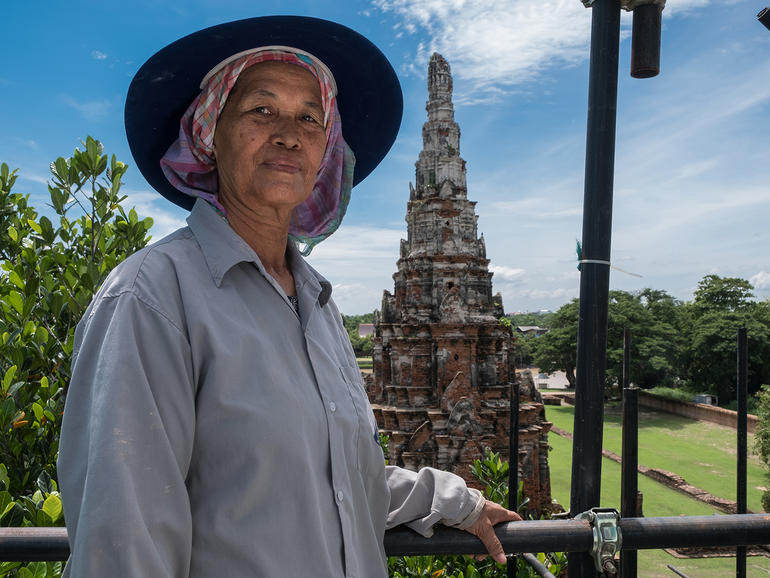
The Wat Chaiwatthanaram team operates on-site under the leadership of WMF’s Senior Project Conservator Josephine D’Ilario. Local master mason Mali Choomchooboon, or Khun Mali, seen here, manages the 11-member team of conservators. With over thirty years working with the Fine Arts Department of Thailand, Khun Mali has worked on just about every monument at Ayutthaya.
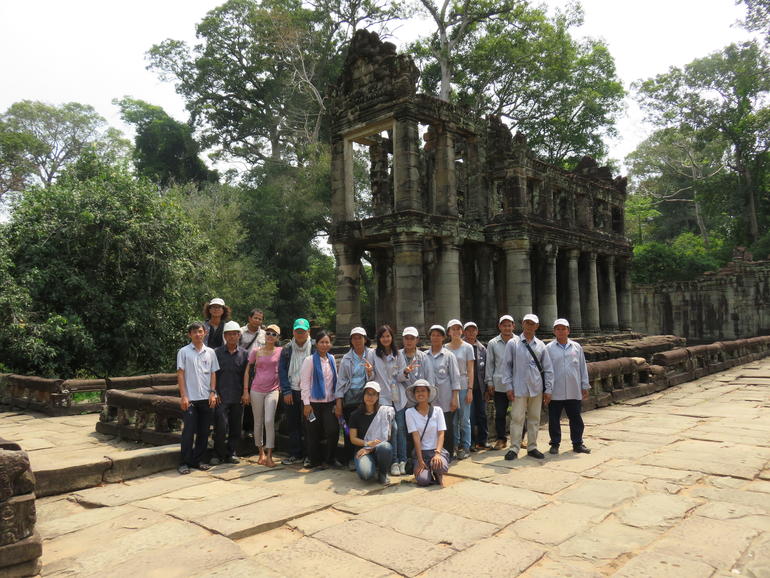
Wat Chaiwatthanaram and its team have also been at the center of a multi-national program since 2015, whereby WMF conservators and technicians from other sites cross-consult for various WMF projects. The exchange has brought Wat Chaiwatthanaram team members to Shwe-nandaw Kyaung in Mandalay, Myanmar, and Angkor Archaeological Park in Siem Reap, Camobodia; Angkor Wat team members to Wat Chaiwatthanaram; and Shwe-nandaw Kyaung team members to First Baptist Church of Mawlamyine in Myanmar.
Seen here, WMF team members from Wat Chaiwatthanaram and Angkor pose in front of the Two-Story Pavilion at Preah Khan temple complex within Angkor Archaeological Park.
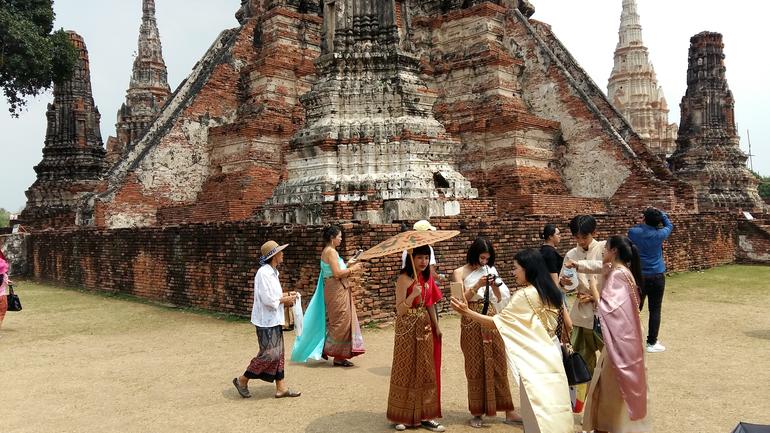
Wat Chaiwatthanaram is even experiencing unexpected fame as the result of a new evening soap opera in Thailand that follows a woman who awakes in the past, in the body of a young royal courtesan living in the temple during the Ayutthaya period.
Fans, seen here, are now flocking to the site – visitor numbers have more than tripled and a virtual village of souvenir and eatery stalls have opened up across the street.
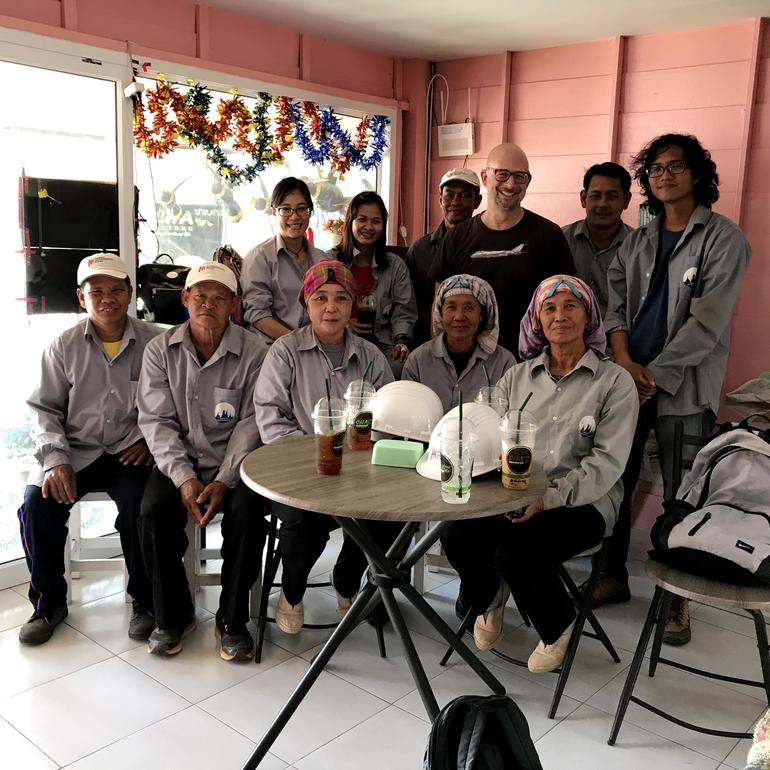
Though a TV show has raised the site’s profile, the real heart of the site for me was World Monuments Fund’s team of Thai workers, pictured with me here in a local café.
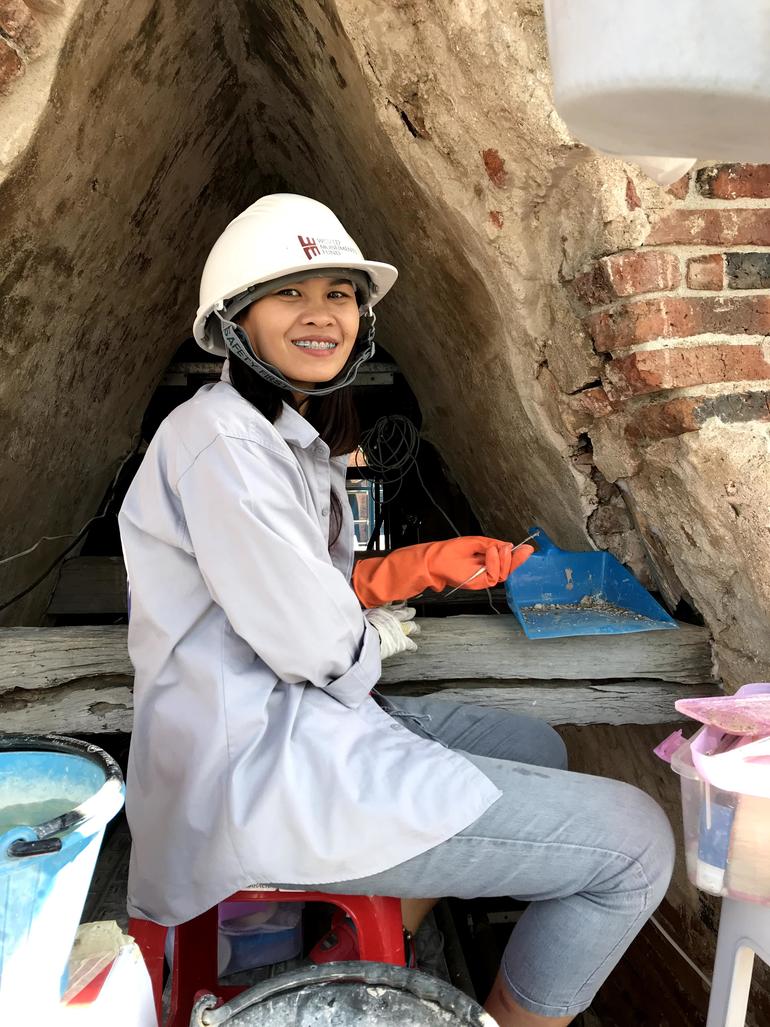
Visiting them high on their scaffold as they injected adhesive to secure spalling stucco and restored lime stucco to fortify the brickwork, I saw first hand how this exacting, and detailed work proceeds inch by inch over the monumental towers, ultimately accomplishing something much larger. Sites of cultural heritage are among Thailand’s greatest resources. WMF's local team is protecting this monumental and magnificent site from further water damage and presenting it to the public following carefully considered field practices. At the same time, they are building their own capacity to ensure that some of Thailand’s most valuable resources — its sites of cultural heritage — are protected for the enjoyment and benefit of future generations.
Our work in Wat Chaiwatthanaram is possible thanks to the leadership support of the Ambassadors Fund for Cultural Preservation, the US Embassy in Bangkok, and the Robert W. Wilson Charitable Trust. Additional contributions have come from hundreds of other generous individuals and institutions.
In 1996, Wat Chaiwatthanaram was listed on the inaugural World Monuments Watch—our flagship advocacy program for threatened sites of cultural heritage—thanks to the founding support of American Express.
Click below to learn more about how you can be a part of these extraordinary achievements.
